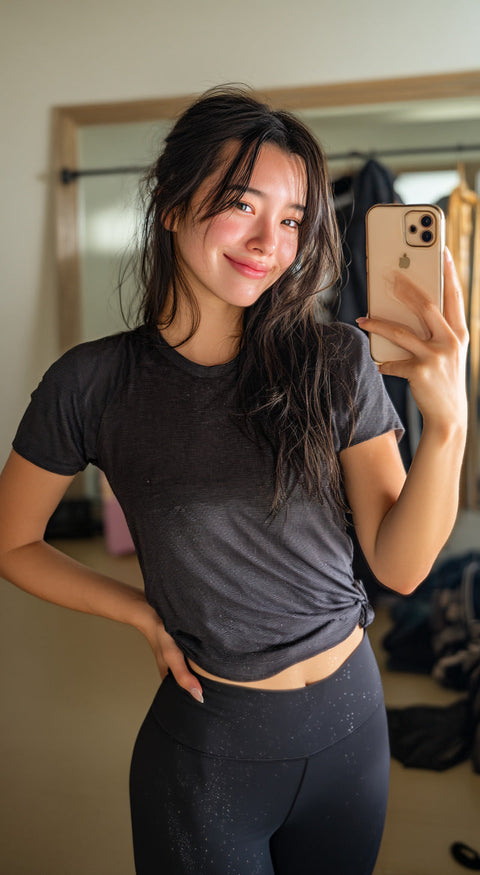
Spandex Fabric – "Small But Powerful" Material In Modern Fashion
Although spandex fabric only accounts for a small proportion of the material composition, it plays a big role in shaping, hugging the figure and bringing comfort to modern clothing.
When One Microfiber Changes the Whole Wearing Experience
Have you ever tried on a pair of stretchy leggings that fit perfectly? Or a dress that hugged your body but felt comfortable all day? If so, chances are you’re wearing something that contains spandex – the invisible yet indispensable fiber in modern fashion.
Spandex is not a “main” fabric like cotton or polyester, but it is often blended with other materials to create elasticity, helping clothes hug the body without being restrictive. With the trend of activewear, athleisure, unisex fashion and even body-hugging office wear on the rise, spandex is quietly becoming an indispensable “hidden material” in the wardrobe.

What Is Spandex Fabric? Origin And Characteristics
Spandex, also known as elastane or lycra, is a synthetic fiber that can stretch 5 to 8 times its original length and quickly return to its original state. Invented in 1958, spandex ushered in a new era of activewear design.
Although spandex itself is not usually used alone, it is blended with cotton, polyester, nylon, etc. to increase elasticity. Products containing spandex are often lightweight, less wrinkled, fit well, and hold their shape much better than non-stretch fabrics.

Popular Uses of Spandex in Gen Z's Wardrobe
You can find spandex in tight-fitting items like crop tops, bodycon dresses, athletic leggings, activewear jackets, swimwear, and even underwear. For garments that require flexible movement, spandex provides a snug fit without constricting , allowing the wearer to move naturally.
In youth fashion, the trend of body positivity and celebrating curves has made tight-fitting designs the norm. And spandex is the fundamental material that creates that effect – helping clothes hug but not “tight”.

Advantages and Disadvantages of Spandex – Not Just Benefits
The outstanding advantage of spandex is its elasticity and durability over time. When worn, fabric containing spandex is less likely to stretch, sag or lose shape even after many washes. In addition, the fabric's grip helps create a standard shape, making the wearer feel comfortable and secure.
However, because it is a synthetic fiber, spandex has the disadvantage of not being as breathable as cotton or linen . Wearing for a long time, especially in hot weather, if the spandex ratio is high, it can cause a feeling of stuffiness or retain sweat.
The solution is to choose products with a reasonable amount of spandex (usually 2-10%) depending on the function. Especially for sportswear or sleepwear, you should choose spandex mixed with natural fibers to balance between elasticity and breathability.

When “Elastic” Is Not Just a Fabric Property – But a New Dressing Philosophy
One of the reasons spandex has become so important to modern fashion is because it goes hand in hand with the philosophy of flexibility and body positivity . Instead of being confined to a certain shape or shape, young people are choosing to wear things that hug their bodies in a soft way – to flatter, not correct.
Spandex allows the wearer to “fit” – not according to old standards, but according to how they feel about themselves. From there, dressing well becomes a free and autonomous experience.
Modern brands like Root Rotation also use spandex in their designs to create flexible, form-fitting products that fit many body types while still maintaining aesthetics, especially in unisex or activewear lines.
Related articles:
Where do natural fibers come from? And why are they becoming more and more popular?
Is polyester fabric cool? The truth to know before buying summer clothes
What is woven fabric? A classic material in every fashion lover's wardrobe

